Frequency Based on Lifestyle: How Often To Get A Pedicure
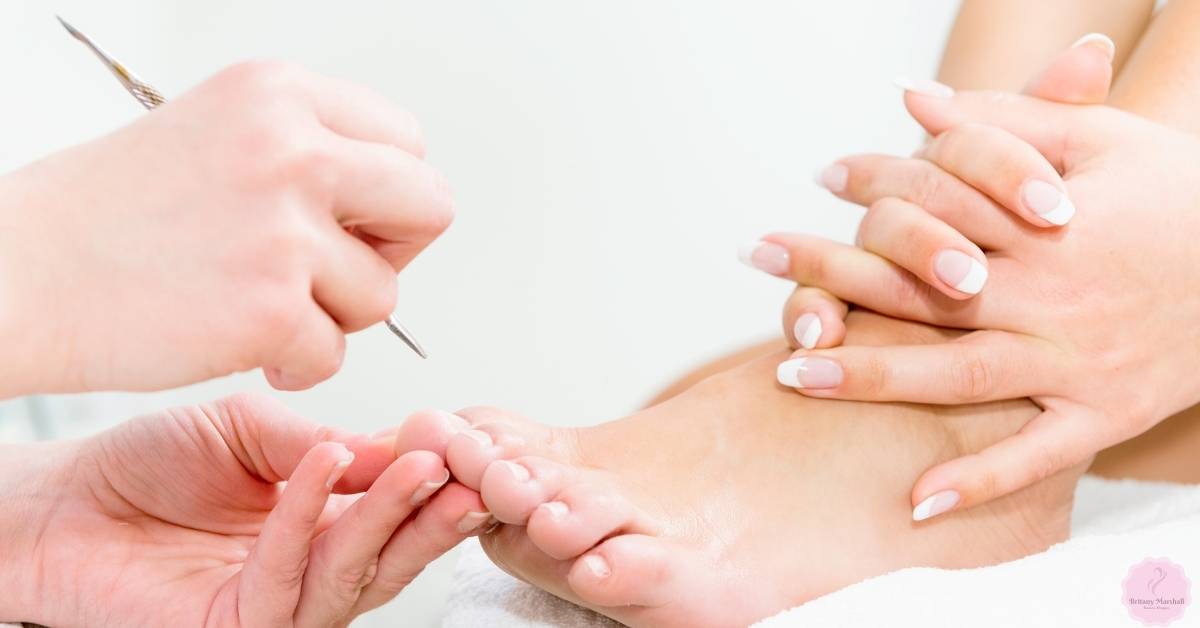
Pedicure frequency is significantly influenced by an individual’s lifestyle. Factors like activity level, profession, and travel habits all play a role in determining how often a pedicure is necessary and beneficial. Understanding these influences allows for a more personalized approach to nail care.
Maintaining healthy nails and feet requires consideration of one’s daily routines. A sedentary office worker will likely have different needs than an athlete, and a frequent traveler will have yet another set of demands. This section explores how various lifestyles impact pedicure frequency and how to tailor care to individual needs.
Lifestyle Impact on Pedicure Frequency
Different lifestyles demand varying degrees of foot care. Active individuals, such as athletes, experience greater friction and potential for injury to their feet. Conversely, those with sedentary jobs may not experience the same level of wear and tear. These variations in activity levels directly affect the need for a pedicure. Frequent travelers, due to exposure to different environments and potentially less consistent foot care routines, also have unique requirements.
Pedicure Needs of Athletes
Athletes, due to intense physical activity, often experience more calluses, dryness, and potential for fungal infections. Their feet endure significant stress and friction, requiring more frequent attention to maintain healthy foot and nail hygiene. The use of athletic shoes, the constant impact on their feet, and the potential for sweat and moisture all contribute to the increased need for professional pedicure services. These services can help to address potential issues, maintain foot health, and prevent infections.
Pedicure Needs of Office Workers
Office workers, typically engaging in less strenuous activities, may not require as frequent pedicures as athletes. However, consistent wear and tear on their feet, coupled with the potential for dryness from indoor environments, can still necessitate periodic pedicures. Regular foot care and appropriate footwear can contribute to maintaining healthy foot and nail hygiene, reducing the need for frequent professional pedicures.
Pedicure Needs of Frequent Travelers
Frequent travelers face a unique set of challenges regarding foot care. Exposure to different environments, changes in humidity, and potentially less consistent foot care routines can increase the risk of dryness, calluses, and fungal infections. Frequent travelers often benefit from regular pedicures to maintain foot hygiene, prevent infections, and ensure comfort during extended periods of travel and exposure to various conditions.
Pedicure Frequency Table, How often to get a pedicure
| Lifestyle | Recommended Pedicure Frequency | Factors Contributing to Need |
|---|---|---|
| Athlete | Every 2-4 weeks | High activity level, increased friction, potential for injury, greater risk of fungal infections. |
| Office Worker | Every 4-6 weeks | Moderate activity level, potential for dryness from indoor environments, consistent wear and tear. |
| Frequent Traveler | Every 3-4 weeks | Exposure to different environments, changes in humidity, potentially less consistent foot care routines. |
Frequency Based on Nail Health
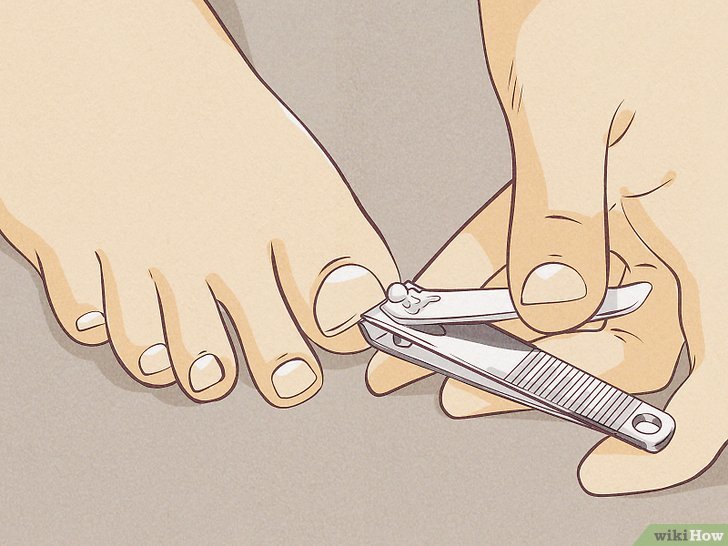
Nail health plays a significant role in determining the ideal pedicure frequency. Ignoring the condition of your nails can lead to problems like infections or worsening existing conditions. A pedicure’s primary function is to maintain nail and foot health, not just aesthetics. Understanding your nail’s specific needs is crucial for a safe and effective routine.
Nail health is intricately linked to pedicure frequency. Healthy nails generally require less frequent pedicures than those with existing conditions or predispositions to problems. The focus should be on preventing complications rather than just aesthetic maintenance. Proper nail care practices are integral to this approach.
Common Nail Conditions Influencing Pedicure Needs
Understanding common nail conditions is essential to tailor pedicure schedules. Various factors, including fungal infections, ingrown nails, and brittle nails, can significantly impact the frequency of pedicures. These conditions necessitate specialized care and attention.
- Fungal Infections: Fungal infections, often appearing as discoloration or thickening of the nails, require more frequent attention. A pedicure performed by a professional with appropriate tools and disinfectants can help prevent the spread of the infection and maintain hygiene. The frequency of pedicures in this case should be determined in consultation with a podiatrist to prevent the spread of the infection and to ensure appropriate treatment.
- Ingrown Toenails: Ingrown toenails can become painful and inflamed. Careful nail trimming and proper foot care are crucial to preventing recurrences. The frequency of pedicures for ingrown toenails should be determined by the severity of the condition and the advice of a podiatrist, as frequent pedicures may not be necessary for minor ingrown toenails, but regular checks and proper care are crucial for preventing worsening of the condition.
- Brittle or Thin Nails: Brittle or thin nails are prone to breakage and splitting. Regular moisturizing and careful handling during pedicures are vital. The frequency should be determined by the individual’s nail health and the advice of a professional.
- Psoriasis or other skin conditions: Certain skin conditions, such as psoriasis, can affect the nails. Treatment for the underlying condition and a cautious approach to pedicure practices are essential. The frequency should be determined by the severity of the condition and in consultation with a dermatologist or podiatrist.
Role of Proper Nail Care Practices
Maintaining a healthy nail environment through proper nail care significantly impacts the intervals between pedicures. These practices include appropriate nail trimming, moisturizing, and the avoidance of harsh chemicals. Proper care helps maintain nail integrity and minimizes the risk of infection.
- Regular Nail Trimming: Proper trimming prevents ingrown nails and promotes healthy nail growth. Trimming should be done regularly, following proper techniques to avoid injury.
- Moisturization: Keeping nails and surrounding skin hydrated is crucial. Regular moisturizing prevents dryness and promotes healthy nail growth.
- Avoiding Harsh Chemicals: Avoid using harsh chemicals on nails and surrounding skin, as these can damage the nail structure and increase the risk of infections.
Pedicure Schedule Based on Nail Condition
The following table provides a general guideline for pedicure frequency based on different nail conditions. These are estimations and individual needs may vary. Consult with a healthcare professional for personalized advice.
| Nail Condition | Pedicure Frequency (Approximate) | Important Considerations |
|---|---|---|
| Healthy Nails | Every 2-4 weeks | Maintain routine for healthy appearance and hygiene. |
| Fungal Infection | Every 1-2 weeks (or as directed by a podiatrist) | Professional care and strict hygiene are essential. |
| Ingrown Toenail | As needed, potentially every 1-2 weeks (depending on severity). | Professional care is strongly recommended to avoid further complications. |
| Brittle/Thin Nails | Every 3-4 weeks | Gentle handling and moisturizing are crucial. |
| Psoriasis/Other Skin Conditions Affecting Nails | As directed by a dermatologist or podiatrist. | Consider the severity and the overall treatment plan. |
Frequency Based on Budget and Time Constraints
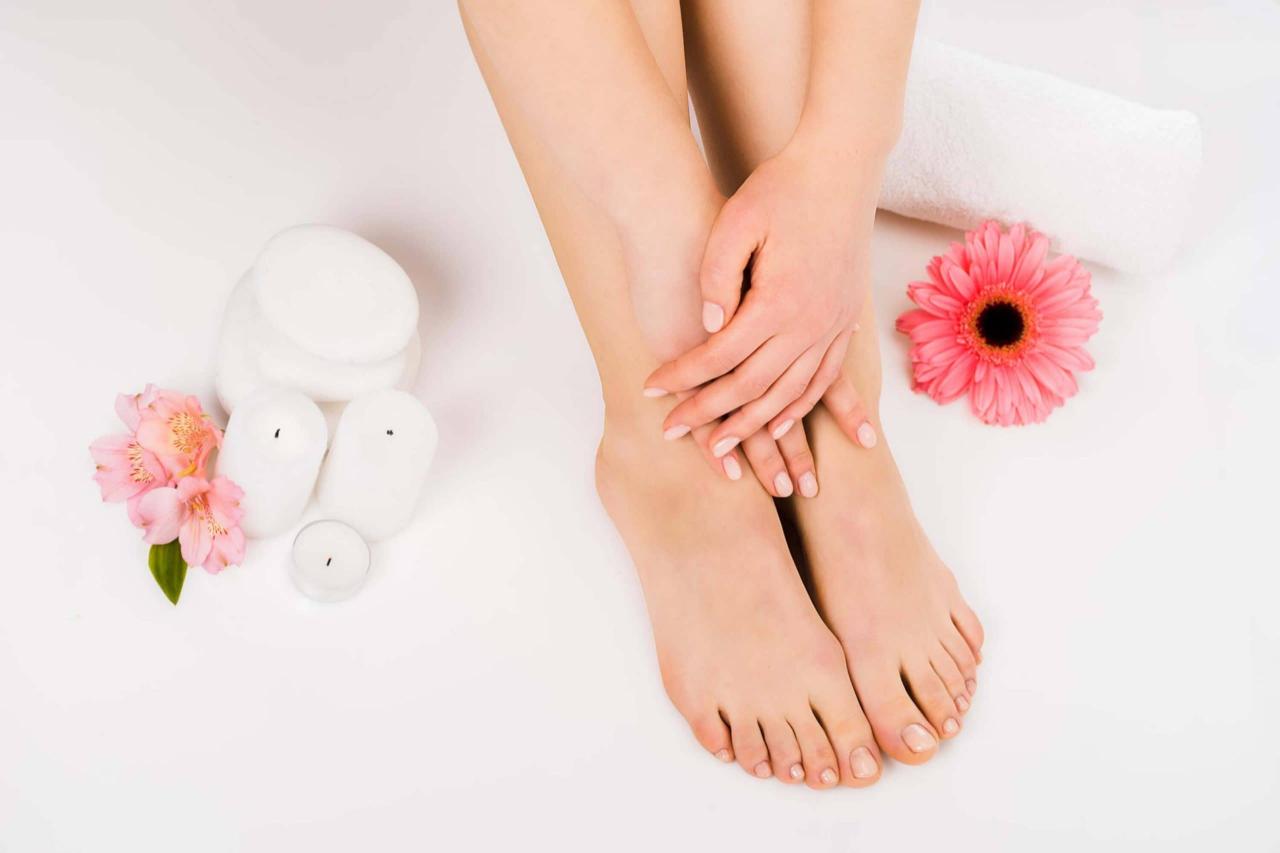
Pedicures, while enjoyable, can sometimes strain budgets and schedules. Understanding the financial implications and finding ways to fit them into a busy lifestyle is key to maintaining a regular pampering routine. This section explores strategies for incorporating pedicures without sacrificing other priorities.
Budgeting for pedicures requires a realistic assessment of costs and personal finances. A regular schedule allows for better planning and prevents unexpected expenses. This section will offer strategies to make pedicures a consistent part of a well-managed lifestyle.
Financial Implications of Pedicures
The cost of a pedicure varies significantly depending on the salon, location, and services offered. Factors such as manicures, extra treatments, and spa packages can increase the overall cost. Regular pedicures can become a substantial expense if not managed carefully.
Budgeting for Pedicures
Establishing a budget for pedicures is essential to avoid overspending. A simple approach is to include the cost of a pedicure in monthly expenses. This helps maintain financial stability and prevents unexpected financial burdens. Creating a dedicated savings account for beauty treatments can help maintain a regular schedule without stress.
Optimizing Pedicure Appointments
Time management is crucial for integrating pedicures into a busy schedule. Scheduling appointments during less-demanding times or utilizing lunch breaks can make it easier to fit appointments into the daily routine. Taking advantage of online booking tools can simplify the process of scheduling appointments and checking availability. Combining pedicures with other errands, such as grocery shopping, can also help optimize time.
Cost-Effective Alternatives
Several cost-effective alternatives exist for those looking for ways to maintain healthy feet without the salon expense. DIY pedicures using readily available supplies and resources can be a budget-friendly solution.
- DIY Pedicures: Utilizing simple ingredients like Epsom salts and essential oils for foot soaks can provide a soothing and rejuvenating experience. Simple DIY recipes can offer comparable benefits to salon treatments, often at a lower cost.
- Community Centers/Local Businesses: Some community centers or local businesses offer affordable pedicure services. Check with local community resources or nearby businesses to see if they have discounted services.
- Group Pedicures: Organizing a group pedicure with friends can be a fun and cost-effective way to enjoy the experience while sharing the cost. This strategy allows for camaraderie and reduces the individual cost burden.
- Foot Spas at Home: Investing in a foot spa at home can provide regular foot care at a fraction of the cost of salon treatments. Regular use of a home foot spa allows for consistent pampering without the expense of a salon.
Frequency Based on Pedicure Type

Choosing the right pedicure type depends on individual needs and preferences, impacting the frequency of treatments. Different types of pedicures offer varying levels of pampering and care, influencing how often one should get them. Understanding the differences between these types is crucial for making informed decisions about your foot health and well-being.
Comparing Pedicure Types
Pedicures range from basic to spa and medical treatments. Basic pedicures focus on cleaning and basic nail care, while spa pedicures add additional pampering and relaxation techniques. Medical pedicures, on the other hand, are designed to address specific foot conditions or concerns.
Impact of Pedicure Type on Frequency
The duration and intensity of a pedicure directly correlate with the frequency of treatments. A basic pedicure, often lasting 30-45 minutes, might be suitable for a more frequent treatment schedule. Spa pedicures, with their extended treatments and luxurious add-ons, are best suited for less frequent maintenance. Medical pedicures, sometimes involving extensive treatments for specific foot problems, are generally scheduled on a less frequent basis, depending on the severity and type of issue.
Duration and Intensity of Pedicure Procedures
The duration and intensity of different pedicure procedures greatly affect the frequency recommendation. A basic pedicure, focusing primarily on hygiene and nail care, requires less time and intensity, thus allowing for a more frequent schedule. Spa pedicures, incorporating elements like paraffin wax treatments, massage, and exfoliation, typically take longer and often include more intensive procedures, justifying a less frequent schedule. Medical pedicures, addressing conditions like ingrown nails or fungal infections, often involve more extensive procedures and treatments that require more time and attention, leading to a less frequent treatment schedule.
Table of Pedicure Types, Duration, and Recommended Frequency
| Pedicure Type | Approximate Duration (minutes) | Recommended Frequency |
|---|---|---|
| Basic | 30-45 | Every 2-4 weeks |
| Spa | 60-90 | Every 4-6 weeks |
| Medical (e.g., for ingrown nails, fungal infections) | 60+ | As needed/recommended by a professional |
Note: Recommended frequencies are general guidelines. Individual needs and professional recommendations may vary.
Frequency Based on Foot Health Issues
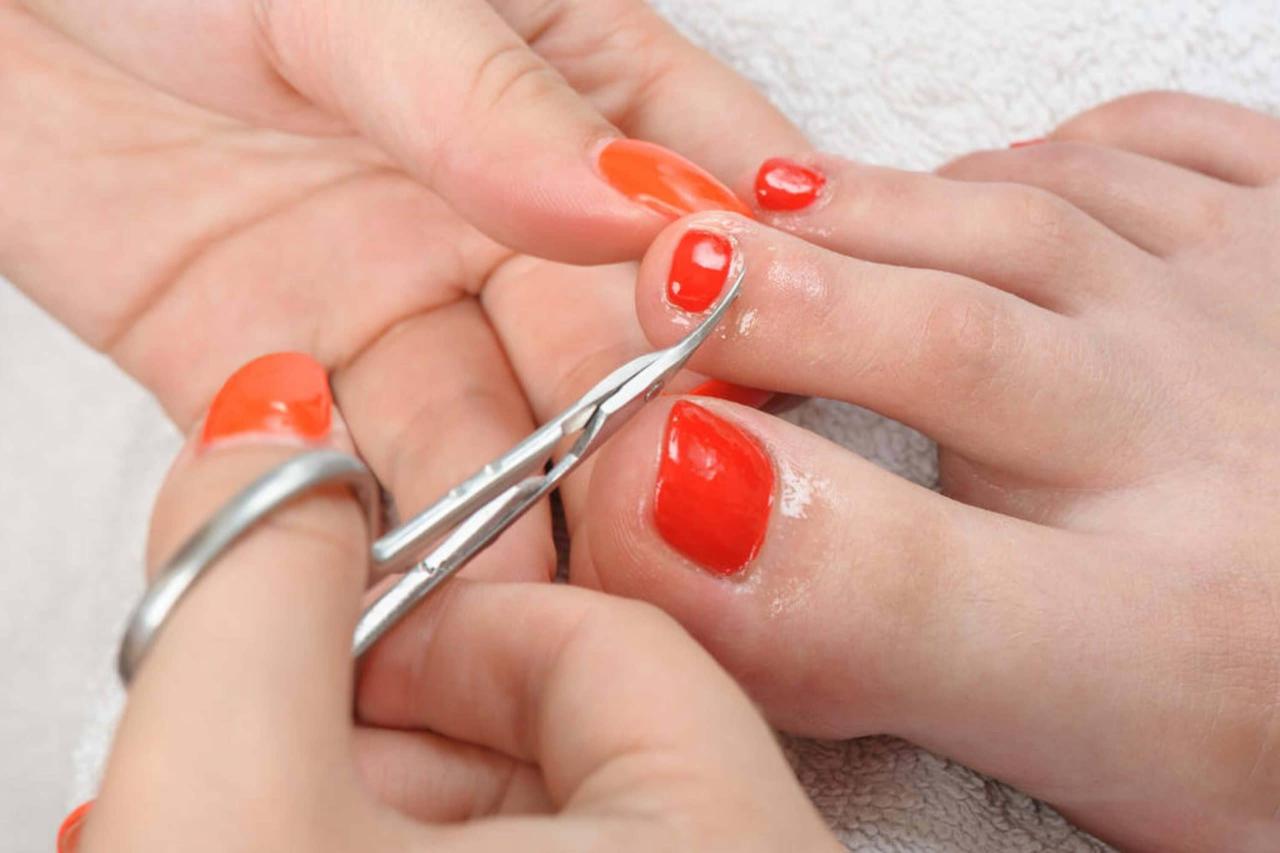
Maintaining healthy feet is crucial for overall well-being. Regular foot care, including pedicures, can play a vital role in preventing and managing various foot conditions. However, the frequency of pedicures should be adjusted based on the specific needs of the feet and any existing health concerns.
Proper foot care, including pedicures, can significantly impact the health and well-being of the feet. For individuals with certain foot conditions, more frequent pedicures may be necessary to prevent complications and promote healing. Understanding the relationship between foot health and pedicure frequency is key to maintaining healthy feet.
Foot Conditions Requiring More Frequent Pedicures
Certain foot conditions, such as ingrown toenails and fungal infections, require more frequent attention than routine foot care. Early detection and intervention are critical to prevent worsening conditions and potential complications.
Role of Pedicures in Managing Foot Health Problems
Pedicures can play a significant role in managing some foot health issues. A professional pedicure can help in removing dead skin, trimming nails properly, and promoting good foot hygiene, all of which are important for preventing the spread of infections and reducing discomfort. Proper nail trimming and the removal of thickened skin can help alleviate pressure points and prevent further complications.
Importance of Consulting a Podiatrist for Severe Foot Issues
For severe foot issues, such as chronic fungal infections, significant pain, or deformities, consulting a podiatrist is essential. A podiatrist is a medical doctor specializing in foot and ankle care. They can diagnose the underlying cause of the problem and recommend appropriate treatment plans, which may include prescription medications, custom orthotics, or surgical interventions. A podiatrist can provide expert care and advice tailored to individual needs. Ignoring severe foot problems can lead to further complications and potentially long-term issues.
Recommended Pedicure Frequencies Based on Foot Issues
The frequency of pedicures depends on the specific foot health issue. A podiatrist can provide tailored recommendations. A general guideline, however, is presented below. Remember, these are only guidelines, and individual needs may vary.
| Foot Issue | Recommended Pedicure Frequency |
|---|---|
| Ingrown toenails (mild) | Every 2-3 weeks |
| Ingrown toenails (moderate) | Weekly or bi-weekly |
| Fungal infections (initial stages) | Every 1-2 weeks |
| Fungal infections (advanced) | Weekly |
| Calluses and corns | Every 2-4 weeks |
| Diabetic foot ulcers (in consultation with a podiatrist) | As prescribed by the podiatrist |
| Plantar warts | Every 1-2 weeks (or as recommended by a podiatrist) |
Frequency Based on Personal Preference
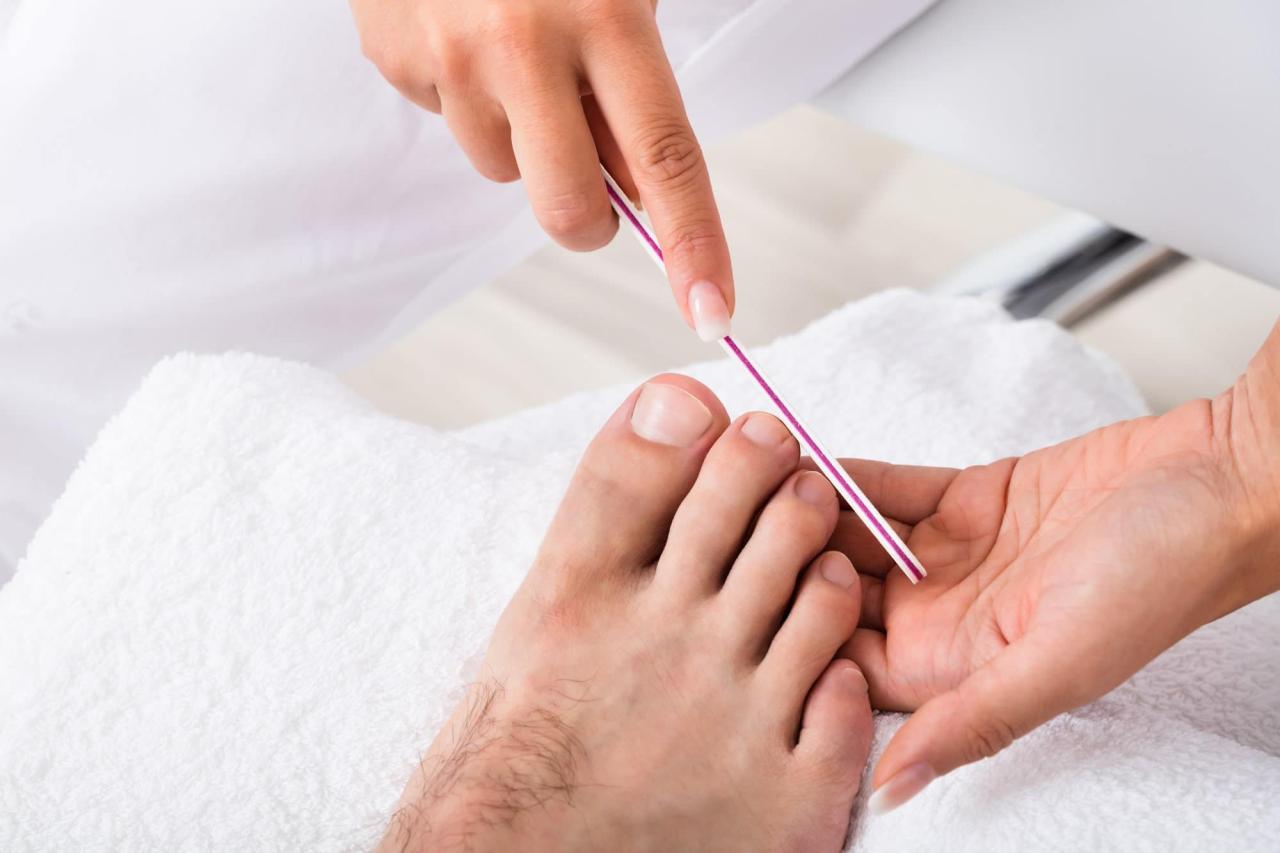
Ultimately, the most crucial factor in determining pedicure frequency is personal preference. While external factors like lifestyle, budget, and foot health are important considerations, a deep understanding of one’s own needs and desires is paramount. A pedicure is a personal indulgence, and its frequency should reflect this.
Personal preference encompasses a variety of factors. It’s not just about how often one *wants* a pedicure, but also the *type* of pedicure that best suits individual needs and desires. Some might prefer a luxurious spa treatment weekly, while others might feel refreshed with a quick, DIY at-home pedicure every two to three weeks. Understanding this nuanced approach is key to establishing a comfortable and enjoyable routine.
Impact of Personal Preferences
Individual preferences significantly impact pedicure frequency decisions. A person who prioritizes pampering and relaxation might opt for a weekly pedicure. Conversely, someone with a busy schedule might prefer a pedicure every few weeks, or even monthly, as long as their feet remain healthy. The choice is deeply personal and should reflect individual needs and desires.
Examples of Personal Preferences
Personal preferences influence the choice of pedicure frequency. A frequent traveler, for example, might opt for a pedicure less often to avoid the inconvenience of travel or the need to maintain expensive or complicated treatments. A busy professional with demanding work hours might prefer a pedicure every four weeks or less frequently, prioritizing work commitments over pampering. An individual who considers pedicures an essential part of self-care might schedule them bi-weekly or even weekly.
Table of Preferences and Frequencies
| Personal Preference | Associated Pedicure Frequency |
|---|---|
| Prioritizes Pampering | Weekly or bi-weekly |
| Prioritizes Relaxation and Self-Care | Bi-weekly or monthly |
| Busy Lifestyle | Monthly or every few months |
| Cost-Conscious | Monthly or less frequently |
| Prioritizes Quick Maintenance | Every few weeks or monthly |
| Prioritizes Foot Health | Based on foot health, possibly monthly or every 2-3 months |
Illustrative Examples of Pedicure Schedules
Understanding your lifestyle, nail health, and budget is crucial for determining the ideal pedicure frequency. This section provides practical examples of how to integrate pedicures into various schedules, highlighting the flexibility and personalization involved.
Different individuals have varying needs and preferences when it comes to pampering their feet. This section offers diverse examples of pedicure schedules to illustrate this, showcasing how to adapt these routines to specific lifestyles and preferences.
Weekly Pedicure Schedule for a Busy Professional
A busy professional may find it challenging to fit in regular salon visits. A weekly home pedicure can be a great solution. This schedule emphasizes efficiency and practicality.
- Sundays: Dedicate 30 minutes after dinner to a home pedicure. This allows for a relaxing routine before the start of a new work week.
- Mondays-Fridays: Quick touch-ups, such as applying cuticle oil or moisturizing the feet, can be incorporated into the daily routine.
Monthly Pedicure Schedule for a Student
A student’s schedule is often unpredictable and may not allow for frequent visits to a salon. A monthly schedule allows for a significant pampering experience without disrupting the usual routine.
- Last Saturday of every month: Allocate a block of time in the evening to pamper the feet. This is a good way to reward yourself for a month of hard work and study.
- Other days: Focus on maintaining foot health by moisturizing and using cuticle oil.
Bi-Monthly Pedicure Schedule for a Health-Conscious Individual
A health-conscious individual may prioritize foot health and may want to incorporate pedicures into their wellness routine. A bi-monthly schedule can balance both aspects.
- Every other weekend: A deep foot soak and scrub, followed by a moisturizing treatment, can help improve blood circulation and soothe tired feet.
- Other days: Regular foot care with moisturizing lotions and foot massages can maintain healthy feet.
Comparison of Weekly/Monthly Pedicure Schedules
This table summarizes different weekly and monthly schedules, highlighting their frequency and typical activities.
| Schedule Type | Frequency | Typical Activities |
|---|---|---|
| Weekly Home Pedicure | Once a week | Quick foot soak, scrub, and moisturizing at home |
| Monthly Salon Pedicure | Once a month | Full salon treatment including soak, scrub, and nail shaping/painting |
| Bi-Monthly Pedicure | Twice a month | Combination of home care and a professional touch-up |
Essential FAQs
How often to get a pedicure – How often should I get a pedicure if I have ingrown toenails?
If you have ingrown toenails, you might need pedicures more frequently, potentially every 2-4 weeks, to prevent further issues and maintain proper nail care. Consult a podiatrist for personalized advice.
What are some cost-effective alternatives to professional pedicures?
Consider DIY pedicures at home, using affordable foot scrubs and moisturizers. You can also look for deals or coupons on professional pedicures to manage costs.
How does my activity level affect how often I should get a pedicure?
High-activity levels, like those of athletes, might require more frequent pedicures to maintain foot health and prevent injuries. Conversely, those with less active lifestyles may find less frequent pedicures sufficient.
What’s the difference between a basic and a spa pedicure?
Basic pedicures typically focus on cleaning and shaping nails, while spa pedicures often incorporate additional treatments like aromatherapy and exfoliation, leading to a more luxurious experience and potentially impacting frequency based on desired pampering.